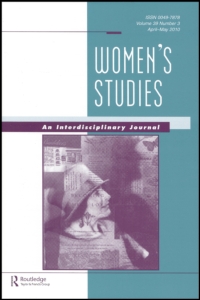
Women's Studies: An Interdisciplinary Journal
Volume 9, Issue 3, Jan 1982
Pages 275-289
- DOI: 10.1080/00497878.1982.9978572
- Print ISSN: 0049-7878
- Online ISSN: 1547-7045
The failure of feminism in Greenwich Village before World War I
American Studies Department Rutgers , The State University of New Jersey
One crucial element of the cultural transformation which pre‐World War I Greenwich Village radicals believed would pave the way for socialist revolution was the liberation of women, not only in political and economic terms, but also in terms of lifestyle. However, both male and female Village feminists found themselves shackled by vestiges of Victorianism and torn between visions of women as naturally maternal and pacifistic and other images of women which demanded sexual equality. The Village was a community supportive of the new feminism, but the variety of feminism that emerged from it suffered from the complacency of male feminists who believed that they could be patrons of feminism, the acceptance of inflated claims advanced by the women's movement, a tendency to accept sexual liberation in lieu of more profound socio‐economic changes, and a failure to create a feminism relevant to the masses of working women in society at large. The young people who came to the Village in the 1920's were more interested in social rebellion than in social reform. Sexual freedom became the sum total of feminism; the end product of the New Freedom was the Flapper.